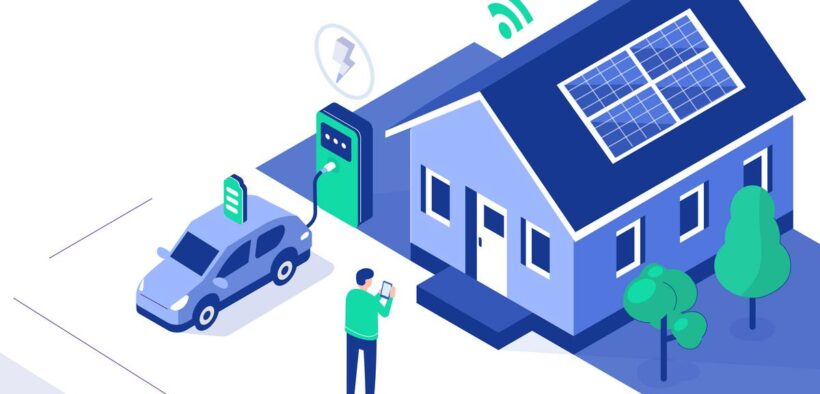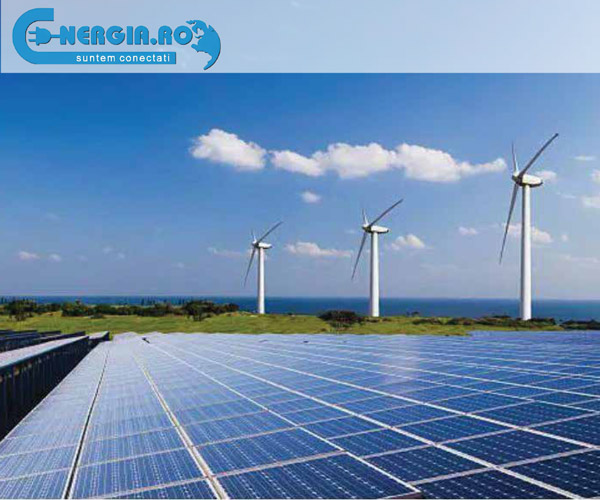ROMANIA: Intelligent Energy Association (AEI) – Top 10 reasons why going all electric is a bad idea
Share

The Intelligent Energy Association considered the complete transition to the use of electricity in buildings, industry, transport, etc. and concluded that this was not a very good idea. AEI a has compiled a list of reasons against this possible change.
Politicians and government officials at every level seem excited about one specific goal when it comes to promoting clean energy: the transition to an all-electric energy system (industry, residential, transportation). The idea may seem to make sense, since fossil fuels and their carbon emissions have become pariahs in the face of climate change.
When we look at a national energy system composed of a mix of production sources (a mix of fossil fuels such as coal and gas); gas transportation and distribution systems for heating, cooking and other energy needs; and direct combustion of fuels from propane to wood pellets to oil, the all-electric thought process seems to go like this:
- Eliminate all direct fuel burning from the energy ecosystem as it releases greenhouse gas emissions, and
- Let's ensure the electricity grid is powered only by carbon-free sources to remove the rest of fossil fuels from our energy use.Leaders under pressure on climate and clean energy issues, who also have no direct energy experience or understanding themselves, see no flaw in this logic. And by adopting this way of thinking, they can make big promises, such as a carbon neutral grid by 2040 or a 100% clean energy system by 2050. These goals seem at first glance, so simple to go all electric in buildings, fully electric in transport, fully electric in industry… fully electric, all the time!
But is this goal a good idea? Are we collectively rushing to this world? And have we looked beyond how great a slogan 100% electrification sounds to consider the potential unintended consequences?
Zero Carbon Merri-bek: 5 steps to all-electric households
AEI have identified 10 potential risks for an all-electric system:
1. Electrical systems are wasteful. The friendliest way to approach energy is to waste nothing, but centralized electrical systems introduce great inefficiencies. These inefficiencies start at the source, more than 60% of the energy used to generate electricity is lost in the conversion process. Add to that the 8% to 15% of power that is lost due to inefficiencies during transmission and distribution. And if an operator must use energy storage, which becomes increasingly necessary as intermittent renewable generation is added to the grid, another 10% to 60% of energy losses are added during that storage.
2. The weather makes electric transport even more inefficient. The dream of a 100% electric power system, full of renewable energy, ignores the challenges of weather. Clean sources of electricity, solar, wind and even hydropower rely on the cooperation of weather patterns, which history has shown is hard to count on. But in addition, the heat of the summer months will lead to greater inefficiencies in transportation. This impact can lead to a 2% to 6% drop in transmission capacity during the summer, at a time when the grid is already dealing with downed power lines, excessive demand from cooling needs and even outages from hurricanes and fires.
3. Coal-fired electricity is not going away fast enough, increasing the carbon intensity of the grid. Moving to 100% electricity means that fossil fuels can be removed from the grid. However, fossil fuel power plants still account for a significant portion of generating capacity and account for nearly a third of total annual output. Even long-term clean energy regions cannot simply remove fossil resources from their systems.
Electricity is simply not practical for all energy needs. Over the past decade, innovation and progress have made the idea of electric vehicles not only feasible, but also a practical choice for many people. This change represents a great success in replacing gasoline with electricity, but it does not mean that we should put the cart before the electric horse for all transportation. For large electric ships electricity is not an option. Studies show that to sail from Asia to Europe, 40% of the ship’s cargo weight would need to be replaced by batteries.
4. Replacing long-haul trucks with electric vehicles in the EU would require 10% of the continent’s energy generation. Given the inefficiency of burning fossil fuels to create energy to cover consumption peaks, experts say such a change would be economically and environmentally unnecessary. Electricity may work for some use cases, but many industries would not thrive under an all-electric paradigm.
5. Common sources of “clean electricity” such as biomass have their own environmental problems. Much of the transition to all “clean electricity” turns out to be more accounting exercise than real environmental benefit, and the biomass industry is one such problem. Proponents of biomass argue that burning trees, wood pulp and other biofuels is carbon neutral because all the carbon that is emitted has first been taken up from the atmosphere by plants, meaning there is a net effect. It is a purely theoretical approach, in reality burning wood to generate electricity now expels a large amount of carbon into the atmosphere. Ultimately, if the forest grows, that carbon will be sucked back up. But eventually it will take too long…we will break the back of the climate system in the next few decades. For all intents and purposes, in the short term, wood is just another fossil fuel, and in climate terms, the short term is what matters most. So even the clean energy sources we’re looking to move to could do the environment more harm than good in the long run.
6. Rural and disadvantaged populations have specific reliability needs that electricity cannot meet. The energy needs of rural and urban residents come with inherent differences, and therefore the best solutions for them will naturally differ. Worldwide, 940 million people do not have access to electricity. While this may not seem like a problem, in the U.S. many rural and low-income areas experience poor electricity service, even when it is available. In these areas, access to non-electric energy sources means they can continue to heat their homes, cook their food and ensure reliable energy use. Given the limited amount of funding available for the electricity sector, money from these regions would be better spent on starting a whole energy system approach, and a recognition that electricity is not always the best option for these categories.
7. The current electricity grid is not capable of handling full electrification. Clean electricity generated is only as good as it can be delivered reliably and affordably to end users, and the state of the transmission and distribution systems today is far behind where it should be. In the rush to advocate for an all-electric system, advocates may overlook the reality that the deployment of electric cars, heat pumps and other electric technologies is poised to increase energy consumption by 40% by 2050. Given that demand current on the grid has led to blackouts, characterizing electricity as insecure, this shift to higher electricity consumption will only make these painful blackouts more frequent, with more serious consequences than other forms of outages energy.
8. Individual buildings need energy resistance. If a customer, building, or even an entire community is forced to rely solely on electricity for all of their energy needs—heating and cooling, food storage and preparation, transportation, etc. – then a single point of failure can break them all. Customers are unlikely to accept a non-resilient energy system and the idea that all their modern facilities could collapse in an instant due to a single downed power line. Instead, customers who still keep a gas line will still have heating and cooking options, and customers without electric cars can still fill up at the gas station.
9. All-electric homes have, on average, larger carbon footprints. Assuming that the goal of tackling climate change and reducing carbon emissions would require electrification of all homes, without taking into account massive changes to the grid. When comparing homes that use electricity to those that use natural gas, studies show that gas homes are responsible for one-third fewer greenhouse gas emissions. So if you want to reduce the carbon footprint of a building, electrification is not considered a win.
10. Customer preference is not for electrification. Consumer choice of form of energy is a good thing, for many applications that require energy, customers prefer gas rather than electricity. Surveys show that almost 70% of customers in Europe prefer natural gas for home heating, water heating and cooking. Similarly, in cold zone homes in Europe, many customers refuse to give up wood heating because of the comfort it provides. Forcing all these non-electric uses to be electrified limits the application, effectiveness and utility that these customers want for important reasons.
Achieving a balanced energy mix is the way to ensure affordable prices, safety in delivery and security in supply, is AEI concluzion.



















